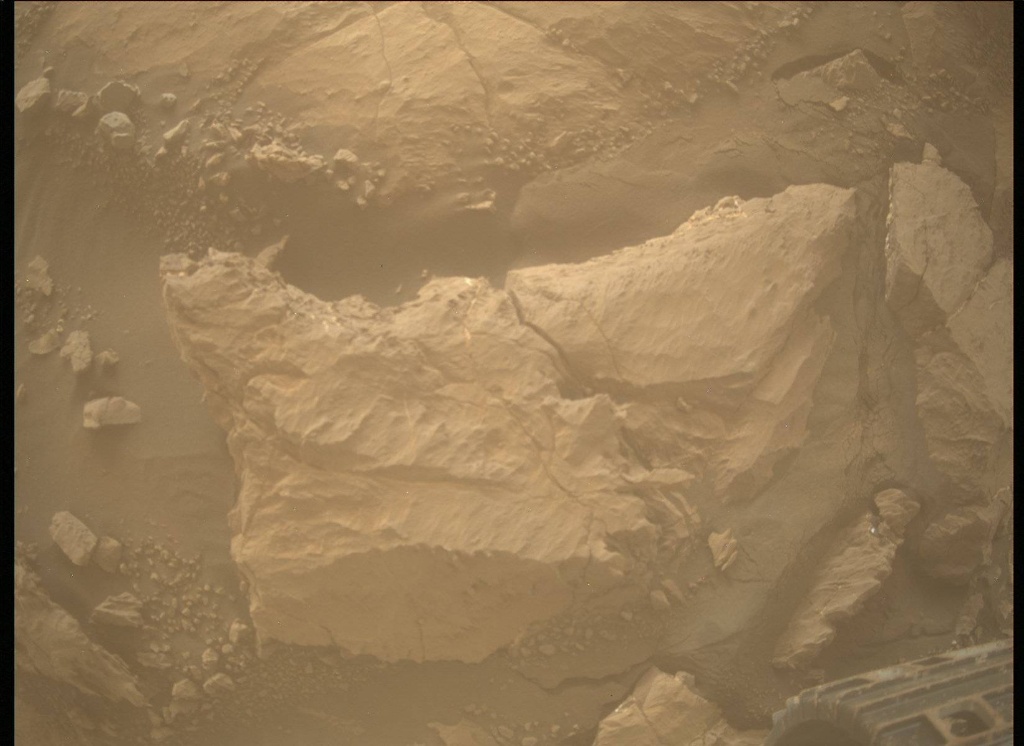April 23, 2018
Sol 2032-2033: The Rocks vs. Stone Cold Aluminum Wheels

Curiosity drove a little over 16 m to the west this weekend. The rover is currently skirting around the southern edge of a small, blocky impact crater on its way north off the Vera Rubin Ridge. One of the activities we did this weekend was use MAHLI to take images of the rover wheels. We do this activity, dubbed Full MAHLI Wheel Imaging (or FMWI in NASA acronym speak), every few hundred meters to track damage to Curiosity's wheels caused by the terrain. It's important for us to take this observation in order to estimate how much farther the rover will be able to drive before the wheels become inoperable, and also to understand if the sharp edges of the broken wheels risk damaging the nearby cables. So far, we estimate we're in pretty great shape for our plans to drive a lot farther up Mt. Sharp!

Today we planned two sols. We'll start the first sol with MAHLI and APXS observations of a bedrock target named "Pokegama." The contact science is followed by some time for remote sensing, which includes a Mastcam mosaic of the nearby crater named "Taconite," and a single image of interesting looking rocks named "Winton," and "Cuyuna." We'll also have ChemCam LIBS and Mastcam documentation images of Pokegama and "Kenora." After the science block we'll have a short drive followed by post-drive imaging and a ChemCam AEGIS observation. In the second sol of the plan, we'll take a Navcam dust devil movie and second AEGIS observation.



